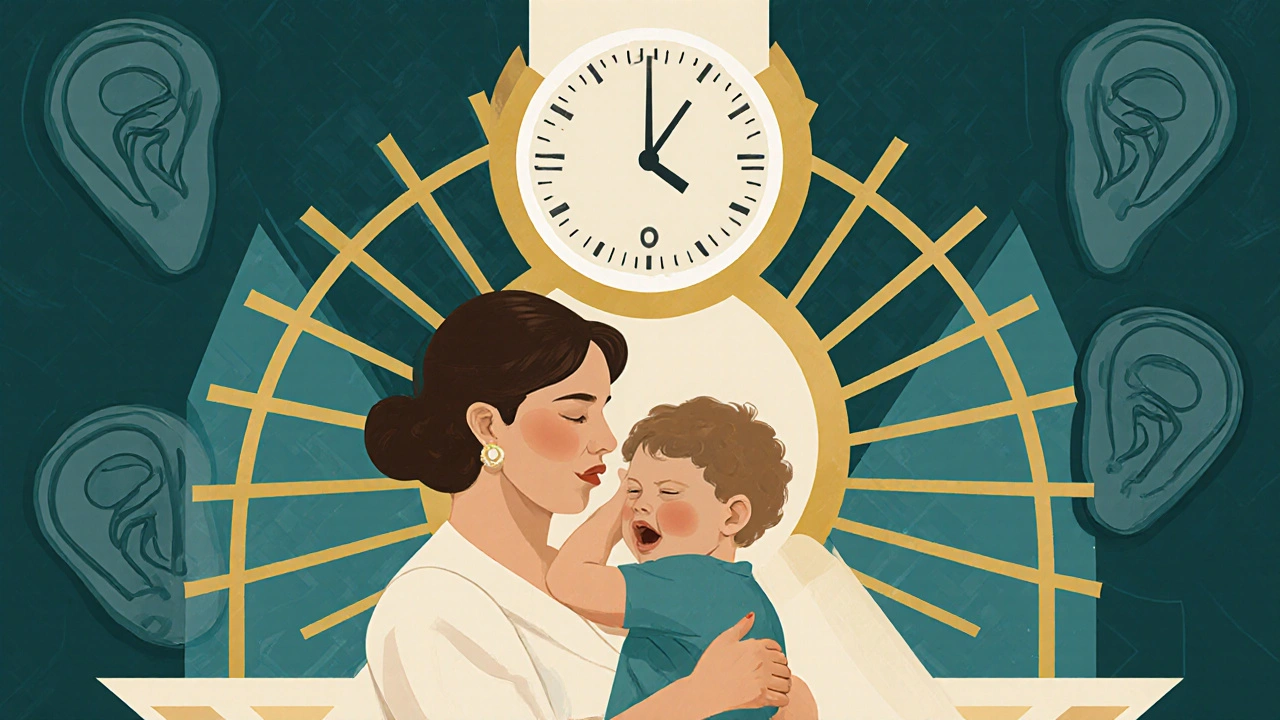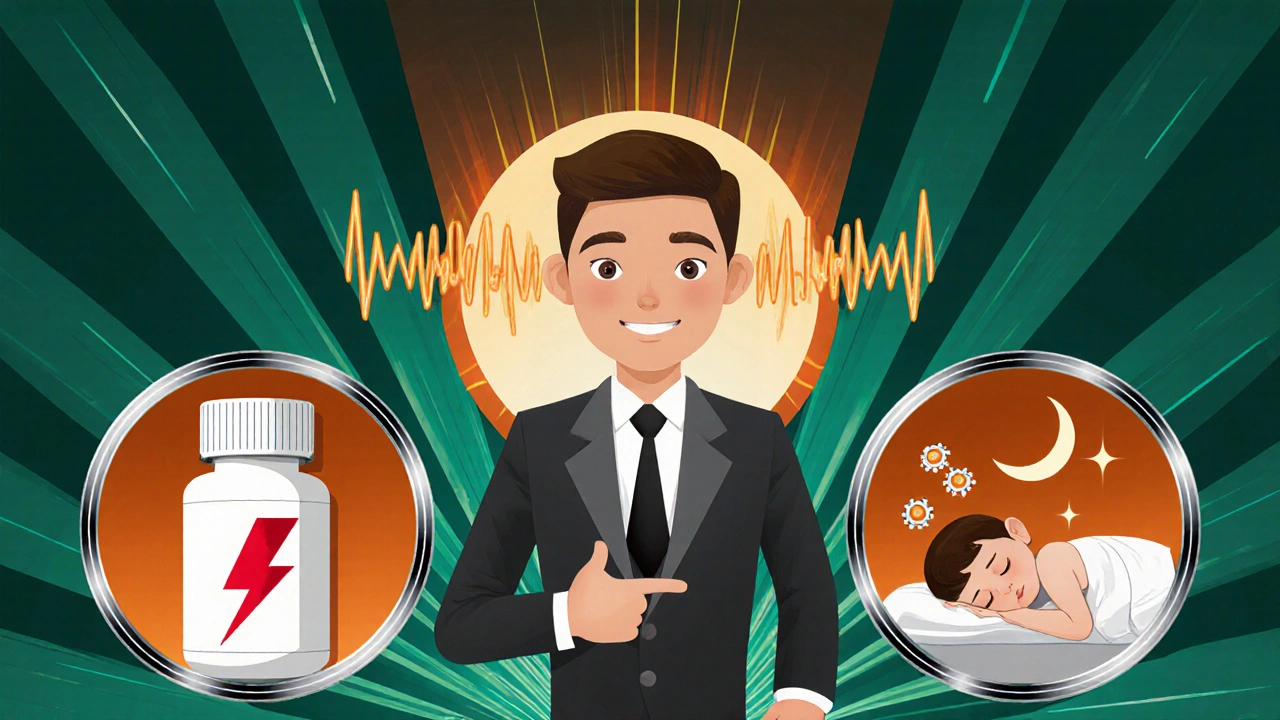Ear Infections in Children: When to Use Tubes, Antibiotics, or Watchful Waiting

When your child pulls at their ear, cries more than usual, or won’t sleep through the night, it’s easy to panic. Is it just a cold? Or is it an ear infection? And if it is, do they need antibiotics right away-or should you wait? The truth is, most ear infections in kids don’t need pills. But knowing when to act-and when to hold off-isn’t always clear. Parents are caught between fear of complications and frustration over endless doctor visits. Here’s what actually works, based on the latest guidelines from pediatric experts in the U.S. and U.K.
What Exactly Is an Ear Infection?
An ear infection in children is usually acute otitis media-a sudden infection behind the eardrum. It’s not just fluid sitting there. There has to be swelling, redness, and pressure. The eardrum looks bulging, not flat. The child often has pain, fever, or irritability. Sometimes, fluid even drains out. This isn’t the same as glue ear, where fluid stays for weeks without infection. Those are two different things.
By age three, 83% of kids have had at least one ear infection. It peaks between six and 24 months. Why? Their Eustachian tubes-the little channels connecting the middle ear to the back of the throat-are shorter, floppier, and more horizontal than adults’. That makes it easier for germs from colds to sneak in and get trapped.
Three Ways Doctors Handle Ear Infections
There are only three real options: antibiotics, watchful waiting, or tubes. No home remedies, no decongestants, no herbal drops. Those don’t work. The science is clear.
1. Antibiotics: Not Always the Answer
Antibiotics like amoxicillin are powerful-but they’re not magic bullets. In fact, up to 80% of ear infections clear up on their own within 48 hours. That’s why doctors now avoid rushing to pills.
Here’s when antibiotics are needed:
- Children under six months old-always.
- Children six to 23 months with infection in both ears-almost always.
- Any child with a fever over 102.2°F (39°C), severe ear pain lasting more than 48 hours, or fluid draining from the ear.
For everyone else-especially kids over two with mild symptoms in just one ear-waiting is safer. Giving antibiotics too often leads to resistant bacteria. In the U.S., overuse has contributed to nearly 3 million antibiotic-resistant infections each year. That’s not just a statistic. It means future infections could be harder to treat.
When antibiotics are used, high-dose amoxicillin is the first choice: 80-90 mg per kg per day. That’s usually two to three times a day for 10 days in kids under two. For older kids with mild cases, five days may be enough. If your child is allergic to penicillin, alternatives like cefdinir or clindamycin are used-but never azithromycin. It doesn’t work well for ear infections.
2. Watchful Waiting: The Smart Default
Watchful waiting isn’t doing nothing. It’s a planned, active approach.
For kids six to 23 months with one infected ear and no severe symptoms, waiting 48 hours before starting antibiotics is recommended. For kids two and older-even with both ears infected-if the pain is mild and the fever is low, you can wait. Studies show 60-80% of these kids get better without any medicine.
During this time:
- Give pain relief: acetaminophen or ibuprofen every 4-6 hours. Don’t wait until the pain is unbearable. Start early.
- Watch for red flags: fever over 102.2°F, worsening pain after 48 hours, or fluid draining from the ear.
- Have a safety-net prescription: Ask your doctor for a back-up antibiotic you can fill only if symptoms don’t improve in two days.
This approach cuts antibiotic use by 35% without increasing complications. Parents who use it report less stress and fewer repeat visits. The CDC says 67% of families who choose watchful waiting still end up using antibiotics-but only when truly needed.
3. Tubes: For the Recurrent Cases
Not every child with a few ear infections needs tubes. But if your child has:
- Three or more infections in six months,
- Four or more in a year, with at least one in the last six months,
- Or fluid behind the eardrum for more than three months with hearing loss (40 dB or worse),
then tubes might help.
Tympanostomy tubes are tiny plastic or metal cylinders placed through the eardrum during a quick, outpatient surgery. They let air into the middle ear, stop fluid buildup, and reduce infection risk. Most fall out on their own in 6 to 18 months.
Studies show tubes cut ear infections in half during the first six months after surgery. But after a year, the benefit fades. That’s why experts now warn against using tubes just because a child has had a few infections. If hearing is normal and the child is growing fine, waiting is better.
Over 667,000 tube procedures are done each year in the U.S.-many unnecessarily. One expert calls it “overuse for simple recurrent AOM without documented hearing impairment.” That’s the key: hearing loss. If your child isn’t struggling to hear, tubes are rarely the right answer.

Pain Management Is Non-Negotiable
No matter which path you choose-antibiotics, waiting, or tubes-pain relief is the most important step.
Studies show 69% of kids with ear infections have significant pain. But only 37% get proper pain medicine. That’s unacceptable.
Use acetaminophen (10-15 mg/kg every 4-6 hours) or ibuprofen (5-10 mg/kg every 6 hours for kids over six months). Don’t wait. Don’t give aspirin. Don’t use ear drops unless prescribed-those don’t reach the infection.
Many parents think the fever is the main problem. It’s not. The pain is. If your child is crying, pulling ears, refusing to eat, or can’t sleep, treat the pain first. Then decide what to do next.
Why Do Some Doctors Still Prescribe Antibiotics Too Often?
Even with solid guidelines, practice varies wildly. One study of over a million visits found antibiotic prescribing rates ranged from 52% in university clinics to 78% in private offices.
Why the gap?
- Parent pressure: 41% of doctors say parents demand antibiotics-even when they’re not needed.
- Time crunch: 68% of clinicians say they don’t have time to explain watchful waiting.
- Diagnostic uncertainty: 33% of cases are borderline. Was that red eardrum really an infection-or just crying?
Good clinics fix this with tools: automated reminders in electronic records, decision aids for parents, and safety-net prescriptions. These reduce inappropriate prescribing by nearly 30%.

What’s Changing in the Guidelines?
The last major update came in 2013. Since then, new data has emerged.
- PCV13, the pneumococcal vaccine, has cut ear infections by 12% and recurrent ones by 20% since 2010.
- Decongestants and antihistamines? No benefit. They can cause drowsiness or worse.
- Antibiotic use for ear infections has dropped from 95% in 1995 to 61% in 2022. That’s progress-but still too high.
A new guideline is expected in 2024. Drafts suggest even tighter rules: tubes should only be offered if hearing loss is proven. Watchful waiting might expand to include some bilateral cases in kids over two.
What does this mean for you? More clarity. Fewer unnecessary treatments. Better outcomes.
What Should You Do Next?
If your child has an ear infection:
- Check for pain and fever. Is it mild or severe?
- Is your child under six months? Then antibiotics are needed.
- Is it both ears and under two? Then antibiotics are likely needed.
- Is it one ear, mild symptoms, and over two? Ask about watchful waiting.
- Ask for a safety-net antibiotic prescription. Keep it on hand, but don’t fill it unless symptoms worsen after 48 hours.
- Give pain relief-right away.
- If infections keep coming, ask about hearing tests. Don’t jump to tubes without proof of hearing loss.
Most ear infections aren’t emergencies. They’re uncomfortable, frustrating, and common-but not dangerous. You don’t need to rush to antibiotics. You don’t need to panic. You just need to know when to wait-and when to act.
Do ear infections always need antibiotics?
No. Up to 80% of ear infections in children clear up on their own within 48 hours. Antibiotics are only needed for babies under six months, children with severe symptoms, or those with infections in both ears under age two. For most older kids with mild symptoms, watchful waiting is the recommended first step.
Can I use ear drops for my child’s ear infection?
Over-the-counter ear drops won’t help with middle ear infections. The infection is behind the eardrum, and drops can’t reach it. In fact, some drops can irritate the ear canal. Only use ear drops if your doctor prescribes them for a specific reason, like swimmer’s ear (otitis externa), which is a different condition.
Are tympanostomy tubes safe for kids?
Yes, tubes are generally safe. The procedure is quick, done under light anesthesia, and most children go home the same day. Tubes usually fall out on their own in 6 to 18 months. Rare risks include scarring of the eardrum or persistent holes, but these are uncommon. Tubes are most helpful for children with hearing loss from fluid buildup or frequent infections-not just for having a few ear infections.
What’s the best pain reliever for a child with an ear infection?
Acetaminophen (Tylenol) or ibuprofen (Advil, Motrin) are both safe and effective. Give acetaminophen at 10-15 mg per kg of body weight every 4-6 hours. Give ibuprofen at 5-10 mg per kg every 6 hours for children over six months. Don’t give aspirin. Start pain relief as soon as symptoms appear-even before deciding on antibiotics.
How do I know if my child has hearing loss from ear infections?
Signs include not responding to whispers, turning up the TV volume, delayed speech, or seeming inattentive. A formal hearing test (audiometry) is needed to confirm. If fluid has been behind the eardrum for more than three months and your child is showing signs of hearing trouble, ask your doctor for a referral to an audiologist. Hearing loss is the main reason doctors recommend tubes.
Can vaccines prevent ear infections?
Yes. The pneumococcal conjugate vaccine (PCV13), given as part of routine childhood immunizations, reduces ear infections by about 12% and recurrent infections by 20%. It also lowers the risk of pneumonia and bloodstream infections. Make sure your child is up to date on all recommended vaccines.
